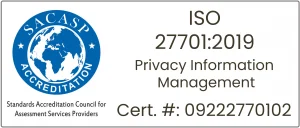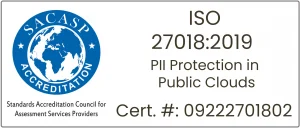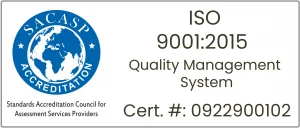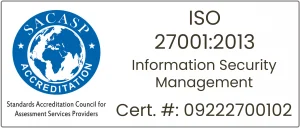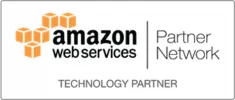In an increasingly globalised economy, cross-border payments have become a crucial component of international trade, remittances, and the digital economy. In 2023, the value of cross-border payments reached over $156 trillion annually, a number expected to grow as e-commerce and digital payment platforms continue to expand.
However, the current landscape for cross-border payments remains fragmented, marked by varying regulatory regimes and complex licensing processes across different countries. These inconsistencies create hurdles for businesses, particularly fintech companies, as they expand internationally, and ultimately struggle with the bureaucratic complexities and high costs associated with obtaining licenses in multiple jurisdictions. These hurdles limit competition and suppress innovation, making it more difficult for new market entrants to thrive.
One possible solution lies in the development of a unified global regulatory framework that simplifies licensing acquisition, promotes a competitive environment, and fosters innovation, much like the successes seen in the Open Banking initiative. A cohesive regulatory approach for cross-border payments could help establish a more efficient, transparent, and inclusive financial ecosystem, benefiting businesses, consumers, and regulators alike.
Complexity in the Current Regulatory Landscape
Fragmentation Across Jurisdictions
One of the most significant challenges for aspiring money transfer operators involved in cross-border payments is navigating the complex regulatory requirements that vary across jurisdictions. In the U.S., businesses face a particularly daunting task, as they must comply with both federal and state-level regulations according to their region of operations.
The U.S. does not have a single, unified national licensing system for payment services. Instead, businesses must acquire state-by-state money transmitter licenses, each with its own set of rules, fees, and compliance obligations. On top of this, federal oversight from agencies like the Financial Crimes Enforcement Network (FinCEN) requires companies to adhere to anti-money laundering (AML) regulations, while other entities like the Consumer Financial Protection Bureau (CFPB) ensure consumer protection.
Each of the 50 states has its own licensing requirements, and some states, like New York, have particularly stringent laws, such as the BitLicense for cryptocurrency firms.
Companies are often forced to engage in a costly, time-consuming process of acquiring individual state licenses, undergoing background checks, and maintaining compliance with varying financial, cybersecurity, and capital requirements. This fragmentation forces businesses to invest significant resources into understanding and adhering to the patchwork of federal and state regulations, creating an enormous barrier to market entry and expansion within the U.S., let alone across international borders.
These overlapping, often conflicting legal frameworks lead to significant operational inefficiencies and drive-up compliance costs, especially for smaller firms, limiting their ability to compete and innovate.
To address this, we propose not just a unified framework for the U.S., but a global regulatory framework that can be applied across countries. This framework would establish common, essential standards for regulations and compliance—such as licensing, anti-money laundering (AML) rules, and consumer protection—that every nation requires.
The harmonisation of these fundamental aspects could help businesses to easily navigate different markets, reducing the need to comply with a patchwork of varying laws. A unified global approach would enable companies to focus on innovation and growth, rather than being burdened by regulatory complexities.
Licensing Challenges
The process of acquiring licenses to operate in foreign markets can be slow and expensive. Each jurisdiction often requires a distinct set of documents, background checks, and audits, all of which increase the cost and complexity of compliance. This disproportionately impacts smaller players in the industry, who may lack the resources to navigate these regulatory challenges effectively.
Financial Crime Prevention and Compliance
Another significant regulatory challenge is ensuring compliance with global financial crime prevention standards, such as AML and combating the financing of terrorism (CFT) regulations. While these measures are necessary, the lack of uniformity across countries adds to the complexity of compliance, raising operational costs and increasing the risk of fines or sanctions for non-compliance.
Increased Remittance Costs, Lack of Innovation
The lack of a unified regulatory framework and the complexity of the licensing process also create significant barriers for foreign remittance service providers seeking to enter new markets. This hinders their ability to expand internationally, limiting market entry for smaller and innovative companies. As a result, the remittance market becomes dominated by a few large players who can navigate these complex regulatory environments. These monopolistic conditions allow established giants to control pricing, often passing on higher costs to customers in the form of increased transaction fees.
Furthermore, this stifles innovation, as new ideas and technologies from emerging fintech companies are unable to break into these markets. The lack of fresh competition means that innovative payment solutions—such as blockchain-based transfers, real-time remittance services, or mobile wallet integrations—struggle to gain traction across borders.
A unified global regulatory framework would break down these barriers, fostering competition, reducing consumer costs, and encouraging the cross-border exchange of ideas and technologies that could revolutionize the remittance industry.
Taking Cues from Open Banking
The Open Banking initiative, which began in Europe and has since expanded globally, offers valuable lessons for the cross-border payments industry. Open Banking’s success is largely due to the implementation of inclusive, standardized regulatory frameworks that promote data sharing, competition, and innovation.
The Open Banking Revolution
Open Banking allows third-party financial service providers to access consumer banking information (with consent) through secure APIs, enabling them to offer innovative financial services. This initiative has reshaped the financial services sector by promoting competition, enriching customer experiences, and fostering innovation.
Countries like the UK and Australia adopted Open Banking frameworks by establishing a core set of standards that each jurisdiction could adopt while maintaining the principles of data sharing and interoperability. This regulatory framework encouraged new entrants, promoted competition, and led to a proliferation of innovative financial products and services.
Applying the Open Banking Strategy to Cross-Border Payments
A similar strategy can be employed in the cross-border payments industry. By developing a unified global regulatory framework for licensing, regulators can create an environment that encourages competition and innovation, much like Open Banking. This would promote seamless cross-border data sharing, and interoperability, and allow for the development of creative solutions by both large institutions and fintech startups.
Unified Global Regulatory Framework for Cross-Border Payments: A Blueprint for Seamless Licensing
The creation of a global regulatory framework for cross-border payments would provide numerous benefits, echoing the positive outcomes of the Open Banking initiative. A simplified and standardized regulatory environment would foster competition, reduce costs, and accelerate the pace of innovation in the industry.
Simplified Licensing Process
A unified regulatory framework would streamline the licensing process by setting clear, standardized norms and requirements that could be accepted across jurisdictions. This would significantly reduce the time and expense associated with acquiring the necessary permissions to operate across borders. As a result, market competition would increase, as more businesses—especially fintech startups—could enter the space without being bogged down by regulatory hurdles.Promoting a Competitive Environment
A level playing field fostered by a unified framework would lead to a more competitive market for cross-border payments. Smaller fintech companies and startups, who often face significant barriers due to high regulatory costs and lengthy licensing procedures, would be able to compete with larger, established players. This increase in competition would drive down fees, improve service quality, and spur innovation.Reducing Regulatory Uncertainty
One of the main advantages of a unified regulatory framework is that it would reduce the regulatory uncertainty that currently plagues the cross-border payments industry. With a clear set of rules and standards that apply across multiple jurisdictions, businesses would face fewer risks of non-compliance. This, in turn, would reduce the chances of operational disruptions and allow businesses to focus on their core activities—developing innovative payment solutions and expanding into new markets.Facilitating Market Entry
Streamlining the licensing process would make it easier for new businesses to enter the cross-border payments industry. By lowering regulatory barriers and reducing the costs associated with compliance, a unified framework would encourage a more diverse range of companies to develop and offer cross-border payment solutions. This influx of new entrants would spur innovation and increase the range of services available to consumers and businesses.
Key Components of a Unified Regulatory Framework
A global regulatory framework for cross-border payments should incorporate several key components to ensure its success:
Harmonized Licensing Standards
At the heart of a unified regulatory framework would be harmonized licensing standards that apply across multiple jurisdictions. This would involve setting clear, consistent criteria for obtaining licenses, with a focus on transparency, risk management, and financial crime prevention.
Interoperability and Data Sharing
The framework should promote interoperability between different payment systems and encourage the seamless sharing of data, similar to the principles of Open Banking. This would allow payment providers to interact with each other more efficiently, reducing friction and improving the speed and reliability of cross-border transactions.
Clear Compliance Requirements
To reduce regulatory uncertainty, the framework should provide clear and consistent compliance requirements for all market participants. This would help businesses avoid the costly and time-consuming process of navigating conflicting regulatory regimes in different countries.
Proportionality in Regulatory Oversight
The regulatory framework should also ensure that the level of oversight is proportional to the size and risk profile of the business. Smaller fintech startups, for instance, should not be subjected to the same compliance burdens as large multinational banks. This would encourage innovation while still maintaining robust safeguards against financial crime.
Promoting Innovation and Financial Inclusion Through Cross-Border Payments
A unified global regulatory framework would not only simplify licensing and promote competition but also serve as a powerful catalyst for innovation in cross-border payments.
Encouraging Fintech Innovation
By lowering the barriers to entry, a unified framework would give fintech companies the freedom to develop new payment technologies and business models. This would accelerate the adoption of emerging technologies like blockchain, AI, and digital currencies in the cross-border payment space, creating faster, cheaper, and more secure payment solutions.Enhancing Financial Inclusion
Cross-border payments are particularly important for financial inclusion, especially in developing economies that rely heavily on remittances. A simplified licensing process would make it easier for payment providers to enter underserved markets, reducing transaction costs and expanding access to financial services for individuals and small businesses.
Role of International and Regional Organisations in Cross-Border Payments
International organizations have taken significant steps to create a cohesive regulatory framework for cross-border payments. Below are some key initiatives and efforts undertaken by these organizations.
Financial Stability Board (FSB):
- Global Standard-Setting: The FSB has established guidelines for improving the efficiency and safety of cross-border payments. They focus on reducing friction and enhancing the speed of transactions while ensuring financial stability.
- Coordination of Regulators: The FSB promotes cooperation among regulatory bodies across different jurisdictions to align regulatory standards and practices, reducing discrepancies that can complicate cross-border transactions.
Bank for International Settlements (BIS):
- Innovation and Collaboration: Through initiatives like the BIS Innovation Hub, the BIS supports central banks in experimenting with new payment technologies and frameworks. This includes research on Central Bank Digital Currencies (CBDCs) and their potential for cross-border payments.
- Regulatory Guidance: BIS guides central banks on regulatory frameworks and best practices for payment systems, fostering innovation while ensuring compliance.
International Monetary Fund (IMF):
- Capacity Building: The IMF assists countries in developing regulatory frameworks for cross-border payments, helping them navigate the complexities of international regulations.
- Policy Development: The IMF conducts research and publishes reports on the state of global payments, offering policy recommendations that promote competition and efficiency in cross-border transactions.
African Financial Services Network (AFSN):
- Financial Inclusion: The AFSN aims to enhance financial inclusion in Africa by promoting collaboration among financial institutions and regulators to create a cohesive payment landscape.
- Interoperability Initiatives: The AFSN works on initiatives that facilitate interoperability between different payment systems across African countries, reducing barriers to entry for new entrants.
Pan-African Payment and Settlement System (PAPSS)
- Streamlined Payments: PAPSS aims to create a unified payment and settlement system for Africa, facilitating real-time payments across borders and reducing reliance on foreign currencies.
- Support for SMEs: By simplifying cross-border payment processes, PAPSS fosters an environment where small and medium-sized enterprises (SMEs) can more easily access international markets.
European Union (EU)
- Regulatory Frameworks: The EU has implemented various regulations, such as the Payment Services Directive (PSD2), which aim to enhance competition and innovation in the payments sector while ensuring consumer protection.
- Cross-Border Payment Roadmap: The EU has developed a roadmap to create an integrated European payments market, focusing on reducing costs and improving the efficiency of cross-border payments.
Collaborative Efforts for Standardization and Innovation
International organizations can collaborate to create a unified regulatory framework for cross-border payments through two primary concepts:
- Standardization of Regulations: These organizations collectively strive to harmonize regulations across different jurisdictions. By working together, they aim to eliminate conflicting requirements that financial institutions face when operating internationally. This standardization simplifies compliance processes, fostering a more integrated global payment landscape.
- Promotion of New Technologies: In addition to regulatory alignment, these organizations encourage the exploration and adoption of innovative technologies such as blockchain, distributed ledger technology, and digital currencies. By sharing knowledge and resources, they aim to enhance the efficiency, security, and overall effectiveness of cross-border payment systems, paving the way for a modernized financial ecosystem.
Through these collaborative initiatives, international organizations play a crucial role in shaping a cohesive and innovative framework for cross-border payments.
Partnerships: A Key to Success in Unified Regulatory Frameworks
Collaborations among regulators, industry participants, and other stakeholders are critical for improving the efficiency of licensing processes within unified regulatory frameworks. Also, cross-partnership among various entities of different sectors helps in establishing this framework.
For example:
- Financial institutions, like banks and insurance companies, can work together to develop common standards for data exchange, risk management, and compliance.
- Technology providers can collaborate with financial institutions to improve regulatory processes.
- Regulatory authorities can team up with industry players to better understand business challenges and possibilities, resulting in improved regulations.
Such partnerships can help to accelerate entry into markets, identify areas for improvement, streamline operations, decrease business constraints, and ensure that regulatory standards are in line with industry best practices and technological improvements.
Challenges in Implementing a Unified Regulatory Framework
Despite its potential benefits, implementing a global regulatory framework for cross-border payments would not be without challenges.
- Political and Regulatory Sovereignty: One of the key challenges is that countries may be reluctant to give up regulatory control over their financial systems. Regulatory sovereignty is a sensitive issue, particularly in areas related to financial crime prevention and consumer protection.
- Achieving International Consensus: Establishing a unified regulatory framework would require significant international cooperation and consensus-building. Countries and regulators would need to agree on common standards and enforcement mechanisms, which could be a time-consuming process.
Simplified Cross-Border Licensing Acquisition: Future Trends
As the global economy becomes more interconnected, efficient and smooth cross-border payment solutions will be essential. This will require more licensing improvements for money transfer businesses.
Technology Adoption in Licensing Process
Licensee Validation Automation
- AI-powered Verification: Automates verification of licensee information like business registration, financial statements, and tax records.
- Real-time Risk Assessment: Uses machine learning algorithms to evaluate potential licensees’ risk based on past compliance history across jurisdictions and industry trends.
- Blockchain-based Credentialing: Creates secure, tamper-proof digital credentials for licensing authorities and licensees.
Global Compliance Monitoring
- Real-time Monitoring: Technology enables real-time compliance monitoring across jurisdictions, identifying potential issues earlier and preventing hefty fines.
- Data Analytics: Advanced tools analyse large licensing data to identify trends, improving compliance efforts and reducing risks.
- RegTech: Helps navigate complex regulatory landscapes and ensure compliance.
Greater Regulatory Cooperation and Harmonisation
- Regional Economic Integration: Deepening trade agreements or free trade zones can harmonise regulatory frameworks.
- Global Regulatory Standards: Common licensing and supervision framework reduces regulatory uncertainty, facilitates cross-border operations.
Enhanced Consumer Protection
- Consumer Education: Informing customers regarding their rights in cross-border payments as a means to safeguard them from fraud and scams.
- Dispute-Resolution Mechanisms: The establishment of effective and accessible systems aid in addressing consumer complaints and protecting their interests.
Sustainability and Social Impact
- Sustainable Finance: Due to the growing emphasis on responsible investing, the regulations must address environmental and social implications.
- Financial Inclusion: Necessary to implement specific regulatory measures and provide support for innovative payment methods, especially in developing nations. Future Trends and Opportunities in Simplified Licensing Acquisition for Cross-Border Payments.
Wrapping Up
Ultimately, a unified global regulatory framework would benefit not only businesses and consumers but also regulators by creating a more transparent, predictable, and secure system for managing cross-border payments.
Simplifying the licensing process and harmonizing regulatory standards would lower costs, reduce regulatory uncertainty, and accelerate the development of new payment technologies.
- Establish a Unified Global Regulatory Framework: Streamline the licensing process for money transfer businesses, providing clear guidelines, standards, and expectations, reducing regulatory uncertainty and facilitating easier market entry.
- Harmonise Regulations: Collaboration with international organisations can develop common standards and principles for individual jurisdictions.
- Simplify Licensing Processes: Reduction of unnecessary documentation, increased transparency, and a risk-based approach can streamline the process.
- Foster International and Regional Regulatory Cooperation: Collaborative forums, joint initiatives, and sharing best practices can help regulators address common challenges.
- Encourage Industry Partnerships: Standardised processes, reducing market-entry barriers, and fostering innovation can create a conducive environment for innovation and growth.
The time to act is now—by embracing global cooperation and regulatory harmonization, we can unlock the full potential of cross-border payments and drive innovation on a global scale.
Ready to get started?
We can’t wait to show you what’s possible with NetRemit.
Related Posts
Revolutionising Remittance: How NetRemit’s Promotion Management Drives Loyalty and Growth
NetRemit empowers remittance businesses to boost growth and build lasting customer loyalty through seamless promotion management. Know how!
How Smaller Money Transfer Operators Can Thrive in International Remittance Landscape
Explore smart strategies and tech-driven solutions for small MTOs to establish leadership and dominate the competitive international remittance market.
Powering the Gig Economy with Instant Cross-Border Payments
See why instant cross-border payments are essential for the gig economy, eliminating delays, high fees, and inefficiencies while boosting global workforce efficiency.

